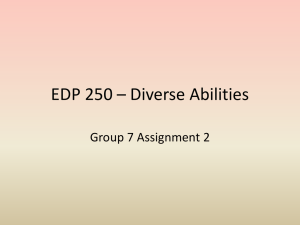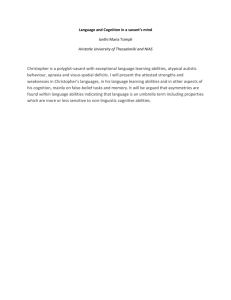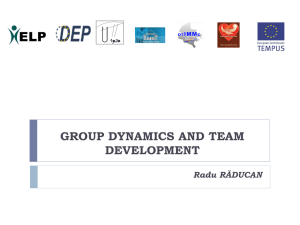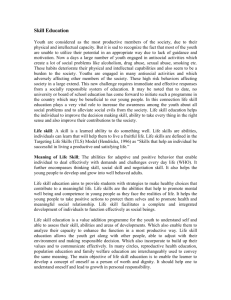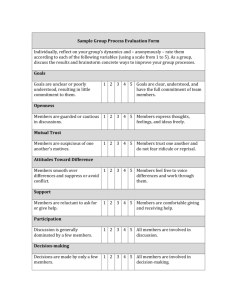What is Critical Thinking
advertisement
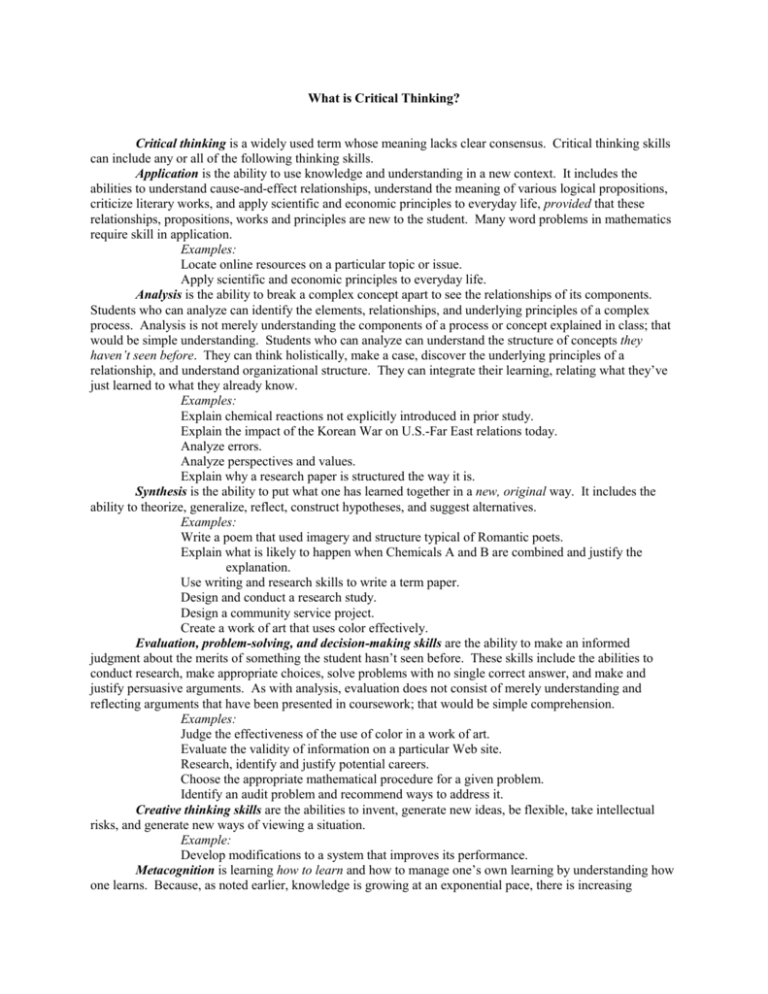
What is Critical Thinking? Critical thinking is a widely used term whose meaning lacks clear consensus. Critical thinking skills can include any or all of the following thinking skills. Application is the ability to use knowledge and understanding in a new context. It includes the abilities to understand cause-and-effect relationships, understand the meaning of various logical propositions, criticize literary works, and apply scientific and economic principles to everyday life, provided that these relationships, propositions, works and principles are new to the student. Many word problems in mathematics require skill in application. Examples: Locate online resources on a particular topic or issue. Apply scientific and economic principles to everyday life. Analysis is the ability to break a complex concept apart to see the relationships of its components. Students who can analyze can identify the elements, relationships, and underlying principles of a complex process. Analysis is not merely understanding the components of a process or concept explained in class; that would be simple understanding. Students who can analyze can understand the structure of concepts they haven’t seen before. They can think holistically, make a case, discover the underlying principles of a relationship, and understand organizational structure. They can integrate their learning, relating what they’ve just learned to what they already know. Examples: Explain chemical reactions not explicitly introduced in prior study. Explain the impact of the Korean War on U.S.-Far East relations today. Analyze errors. Analyze perspectives and values. Explain why a research paper is structured the way it is. Synthesis is the ability to put what one has learned together in a new, original way. It includes the ability to theorize, generalize, reflect, construct hypotheses, and suggest alternatives. Examples: Write a poem that used imagery and structure typical of Romantic poets. Explain what is likely to happen when Chemicals A and B are combined and justify the explanation. Use writing and research skills to write a term paper. Design and conduct a research study. Design a community service project. Create a work of art that uses color effectively. Evaluation, problem-solving, and decision-making skills are the ability to make an informed judgment about the merits of something the student hasn’t seen before. These skills include the abilities to conduct research, make appropriate choices, solve problems with no single correct answer, and make and justify persuasive arguments. As with analysis, evaluation does not consist of merely understanding and reflecting arguments that have been presented in coursework; that would be simple comprehension. Examples: Judge the effectiveness of the use of color in a work of art. Evaluate the validity of information on a particular Web site. Research, identify and justify potential careers. Choose the appropriate mathematical procedure for a given problem. Identify an audit problem and recommend ways to address it. Creative thinking skills are the abilities to invent, generate new ideas, be flexible, take intellectual risks, and generate new ways of viewing a situation. Example: Develop modifications to a system that improves its performance. Metacognition is learning how to learn and how to manage one’s own learning by understanding how one learns. Because, as noted earlier, knowledge is growing at an exponential pace, there is increasing recognition that we must not only educate our students with what we know today but also prepare them for a lifetime of learning, often on their own. Metacognition is thus becoming an increasingly valued skill. Metacognition includes the abilities to use efficient learning techniques, discuss and evaluate one’s problemsolving strategies, form efficient plans for completing work, and evaluating the effectiveness of one’s actions. Metacognition is often taught and assessed by having students write reflections on what and how they’ve learned. Examples: Develop a personal study strategy that makes the most of one’s learning style. Reflect on one’s writing process. Reflect on one’s completed work. Other productive dispositions or habits of mind include the abilities to work independently, set personal goals, persevere, organize, be clear and accurate, visualize, be curious, and be open-minded to new ideas. Examples: Develop and use effective time management skills. Follow directions correctly. Critical thinking skills can also include the abilities to seek truth, clarity and accuracy, distinguish facts from opinions, and have a healthy skepticism about arguments and claims. Suggested Readings Anderson, L. W. (Ed.), Krathwohl, D. R. (Ed.), & Bloom, B. S. (2000). Taxonomy for learning, teaching, and assessing: A revision of Bloom’s taxonomy of educational objectives. New York: Longman. Angelo, T.A. (1991). Ten easy pieces: Assessing higher learning in four dimensions. In Classroom research: Early lessons from success. New Directions in Teaching and Learning No. 46. San Francisco: JosseyBass. Biggs, J. (2001). Assessing for quality in learning. In Suskie, L. (Ed.), Assessment to promote deep learning. Washington: American Association for Higher Education. Erwin, T. D. (2000). The NPEC sourcebook on assessment, volume 1: Definitions and assessment methods for critical thinking, problem solving, and writing [Electronic version]. Washington: National Center for Education Statistics. Retrieved May 1, 2003, from http://www.nces.ed.gov/npec/evaltests/ Facione, P. A. (1998). Critical thinking: What it is and why it counts. Retrieved May 1, 2003, from http://www.calpress.com/pdf_files/what&why.pdf Greenwood, A. (Ed.). (1994). The national assessment of college student learning: Identification of the skills to be taught, learned, and assessed: A report on the proceedings of the second study design workshop. Research and Development Report NCES 94-286. Washington: U.S. Department of Education, Office of Educational Research and Improvement, National Center for Education Statistics. Gronlund, N. E. (1999). How to write and use instructional objectives (6th ed.). Upper Saddle River, NJ: Prentice Hall. Herman, J. L., Aschbacher, P. R., & Winters, L. (1992). A practical guide to alternative assessment. Alexandria, VA: Association for Supervision and Curriculum Development. Marzano, R., Pickering, D., & McTighe, J. (1993). Assessing student outcomes: Performance assessment using the dimensions of learning model. Alexandria, VA: Association for Supervision and Curriculum Development. Tittle, C. K., Hecht, T., & Moore, P. (1993). Assessment theory and research for classrooms: From ‘taxonomies’ to constructing meaning in context. Educational Measurement: Issues and Practice, 12(4), 13-19. Linda Suskie Middle States Commission on Higher Education 2/17/2016

